1852 – Ludwig Karl Heinrich Struckmeier
On November 2, 1852, Ludwig Karl Heinrich Struckmeier was born in house number 27 in the small village of Hüllhorst to Karl Struckmeier and Anna Greimann. Hüllhorst was a farming community located in Kreis Lübbecke (the rural county of Lübbecke), part of the larger Regierungsbezirk Minden (government distirct of Minden) in Provenz Westfalen (the Province of Westfalen) which was a part of Königreich Prueßen (the Kingdom of Prussia). Friedrich Wilhelm IV was the king of Prussia when Ludwig Struckmeier was born, ruling from 1840 to 1861.
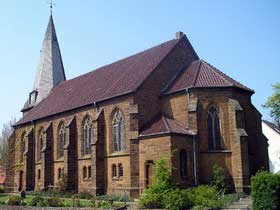
Ludwig Struckmeier was baptized in the Evangelische Kirche Hüllhorst (Evangelical Church of Hüllhorst). The church dates back to at least 1310. It was originally a Roman Catholic church until the Reformation. The congregation has a Roman Catholic missal dating to 1510 with inscriptions in it from Peter Thadenhsen, the last priest who served the congregation. He claims to have copied some information from the “old” missal of 1310.
Years later, after emigrating to the United States, Ludwig Struckmeier anglicized his name to Louis Struckmeyer.
Hüllhorst
The town of Hüllhorst lies on a plain below the Wiehengebirge (Wiehen mountains), a low east-west mountain range that stretches from Minden to Osnabrück in Westphalia. The town is about a mile and a half west of the village of Schnathorst and a mile southwest of the village of Holsen. The three towns form an elongated triangle, with Holsen at the northern apex and at a higher elevation. The road between Hüllhorst and Schnathorst, which forms the bottom of this triangle, is called Schnathorster Straße.
Of the three small villages, Hüllhorst was the largest in the 1800s. It served as the center for a number of neighboring villages—Grossenberken, Oberbauerschaft, Quarnheim, and Tengern, in addition to Holsen and Schnathorst.
Today, Hüllhorst is a part of Kreis Minden-Lübbecke in Nordrhein-Westfalen (North Rhine-Westphalia), the largest Federal State of Germany.
Provinz Westfalen, Königreich Prueßen
Westfalen (or Westphalia) is a historical region in west-central Germany east of the Rhine River. No exact definition of borders can be given, because the name Westfalen was applied to several different entities in history. It is roughly the region between the rivers Rhine and Weser, located north of the Ruhr River. Westfalen means “the western plain.”
For more information about the region of Westfalen and its history, see the web page devoted to Ludwig’s parents Karl Struckmeier and Anna Greimann.
parents and siblings
Ludwig (Louis) Struckmeyer was the first of nine children born to Anton Karl Freidrich Struckmeier and Anna Katharina Louise Charlotte Greimann.
Anton Karl Freidrich Struckmeier was called Karl throughout his life. He was born and raised in house number 16 in Holsen. In addition to being a farmer, he became skilled as a cabinetmaker. He later taught those woodworking skills to Louis.
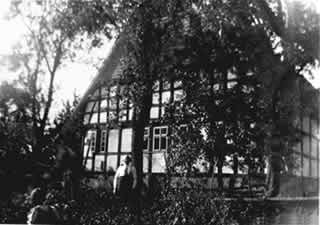
When Karl married Anna Greimann on February 3, 1850, he moved to her parent’s home at Hüllhorst Nr. 27 and helped work the farm. It was in this house that Karl and Anna raised their family.
Anna’s father Christian Greimann had been born Christian Ludwig Kleine Kottmeier in 1799. On May 14, 1820, he married Anne Marie Louise Greimann. Her family had property, so he took her last name at marriage. This was not unusual at the time. The common term was “marrying the farm.”
During the first sixteen years of their marriage, Karl and Anna gave birth to:
- Ludwig Karl Heinrich (Louis), born November 2, 1852
- Heinrich Ludwig Gottlieb, born February 9, 1855
- Carl Heinrich (Henry or Hy), born December 21, 1856
- Carl Heinrich Gottlieb (Gottlieb), born on May 22, 1859
- Anne Marie Sophie Charlotte (Charlotte), born on March 23, 1862
- Anna Marie Louise, born on March 23, 1863
- Anne Marie Catherine Louise Charlotte (Louise), born March 25, 1864
- Anna Catherine Louise Charlotte (Anna), born on February 21, 1865
- Anne Sophie Marie Charlotte, born on March 4, 1866
Their second child Heinrich Ludwig Gottlieb died on March 11, 1856 just after his first birthday.
1853 – Henriette Eleanora Detering
Henriette Eleanora Detering was born in house #5 in the tiny village of Wimmer, Amt Wittlage, Königreich Hannover (Kingdom of Hannover) on April 26, 1853. She was the daughter of Gerhardt Detering and Maria Lahrmann.
In German, the name Henriette is pronounced like “Henrietta” and later census records often spelled her name that way.
Wimmer
Wimmer is a very small town just east of the town of Bad Essen in Kreis Osnabrück. Both towns lie northeast of the city of Osnabrück. The parish church for the area was located at Lintorf. Henriette was baptized there on May 1, 1853.
Kreis Osnabrück
Today, the Kreis (or county of) Osnabrück is part of Niedersachsen (Lower Saxony) in Germany.
At the center of the Kreis is the city of Osnabrück, which was founded around 780 by Karl der Große (Charlemagne). Sometime before 803, the city became seat of the Prince-Bishopric of Osnabrück. which meant that it was ruled by a bishop of the Roman Catholic church. Such principalities were common under Heiliges Römisches Reich (the Holy Roman Empire).
In 1803, Osnabrück came under control of the Königreich Hannover (the Kingdom of Hannover), which was then invaded by France. From 1807 to 1810, it was part of the French Kingdom of Westphalia (La Royaume de Westphalie), after which it passed directly to L’Empire des Français (the Empire of the French), more commonly known today as the First French Empire or the Napoleonic Empire. After 1815, Osnabrück again became part of the German Königreich Hannover (the Kingdom of Hannover).
Königreich Hannover
The town and region of Hannover is generally spelled Hanover in English. Königreich Hannover (the Kingdom of Hanover) had its origin in Fürstentum Calenberg (the Principality of Calenberg) which was created in 1432. Although it was called a principality, it was ruled by a duke, not a prince, and was a subdivision of the larger Herzogtum Braunschweig-Lüneburg (the Duchy of Brunswick-Lüneburg), a state of Heiliges Römisches Reich (the Holy Roman Empire).
In 1636, the capital of the Principality of Calenberg was moved from the town of Pattensen to the town Hannover, and soon the principality also became known informally as Fürstentum Hannover.
In 1692, the Holy Roman Emperor, Leopold I, elevated Duke Ernest Augustus, the ruler of the Principality of Calenberg, to the rank of Kurfürst or Elector of the Empire as a reward for military support he had given the emperor. The principality became known as Kurfürstentum Braunschweig-Lüneburg (the Electorate of Brunswick-Lüneburg) or, informally, Kurfürstentum Hannover (the Electorate of Hannover).
In 1714, George, the son of Duke Ernest Augustus and his wife Sophia of Hannover, became King George I of Great Britain, establishing the British House of Hanover. Under the Act of Settlement in 1701, the English throne could only be held by a Protestant. Because Queen Anne, the daughter of James II, was dying, Sophia of Hannover, the nearest such relative, was designated as the next heir by a vote of Parliament. But Sophia died shortly before Anne, and her place was taken by her son, George.
In 1803, the Electorate of Hannover was occupied by France, which ruled over it in some form or another for the next ten years. From 1807 on, the Hanoverian territory became part of the Kingdom of Westfalen (in French, La Royaume de Westphalie), ruled by Jérôme Bonaparte, Napolean’s younger brother. The Hanoverian army was dissolved, but many of the officers and soldiers went to England, where they formed the King’s German Legion.
In 1813, Kurfürstentum Hannover (the Electorate of Hannover) was restored, and in October of 1814 it was elevated to Königreich Hannover (the Kingdom of Hannover) by the Congress of Vienna, in an attempt to balance the power of other German kingdoms. This was the situation in 1853 when Henriette Eleanora Detering was born in the town of Wimmer.
Hannover remained an independent kingdom from 1814 to 1866, when Prussian armies under Bismarck appropriated the territory and its wealth to continue the territorial expansion of Königreich Prueßen (the Kingdom of Prussia). Hannover remained a province of Prussia, Provinz Hannover, from 1866 to 1946.
Henriette’s early life
Henriette was the youngest of eleven children born to Gerhardt and Clara Detering in Wimmer.
- Maria Clara Detering, born March 23, 1829
- Maria Elsabein Detering, born October 27, 1831
- Johann Heinrich Detering, born April 9, 1834
- Stillborn Detering, born March 17, 1836
- Catharina Maria Detering, born April 21, 1837
- Ernst Friedrich Detering, born July 17, 1840
- Caspar Heinrich Detering, born August 21, 1842
- Maria Eleonore Detering, born March 16, 1845
- Maria Clara Elisabeth Detering, born January 19, 1848
- Franz Heinrich Detering, born August 21, 1850, died October 5, 1854
- Henriette Eleanora Detering, born April 26, 1853
Henriette’s mother Clara died in 1855 when Henriette was two years old.
Henriette’s son Charles Struckmeyer later described her early years in Wimmer:
“Until she was fourteen, it was her sister Marie [Catherina Maria] who cared for her. Marie then went to America in 1869. After that, it was a sister, Elsabein [Maria Elsabein], who took charge of the home. Sister Marie married Henry Ahlers after she came to this country and was our Aunt Mary Ahlers.
“On the birth certificate, Mama’s father was listed as full heir (Voll Erbe) to the family estate. While this publicly and legally put him in a class with the wealthiest men in Wimer, he still insisted on everyone doing their share of the chores. So, in spite of the fact that she was not very robust, Mama had to do her share of the weeding. The flax fields in Germany were kept as free of weeds in those days as are the flowerbeds in our country today. With all of her love of flowers, there was one flower Mama did not like, and this was the cornflower which grew as a weed in Germany.
“When Mama grew to be about sixteen years of age, her hope chest was built, and is still in the family. It was built of boards stored in the attic that were accumulated through the years, from trees that either had to make way for improvements or showed signs of having reached full growth. They were used for all household necessities, made of wood, including coffins in case of a death in the family. Mama’s chest is rather large; forty-six inches long, twenty-five inches high, twenty-one inches wide at the base of the dome lid, and eighteen and one-half inches wide at the base mold.
“Into this chest went Mama’s share of the linen, spun and woven from the flax grown on her fathers land. There was no way of knowing just which pieces of linen Mama had woven herself, because the linen that the tenants wives and daughters did on shares was also a part of the linen that went into her chest. Working on shares meant that the landlord furnished the f1ax and as payment, he received a certain portion of the finished linen.
1862 – 1871: Prussian wars of domination
In 1862, Otto von Bismarck became premier of Prussia. Bismarck unified Germany under Prussian leadership by means of three deliberately planned wars over the next decade.
In 1864, Prussia and Austria fought Denmark over Schleswig-Holstein. Then Bismarck attacked Austria in the Austro-Prussian War of 1866, gaining additional territory. The Deutscher Bund (German Confederation) was dissolved, and the Prussian-dominated Norddeutscher Bund (North German Confederation) took its place.
When Louis Struckmeyer was seventeen and Henrietta Detering was sixteen, Germany went to war with France. In the Franco-Prussian War (1870–71), the armies of the North German Confederation overwhelmed the French military. In 1871, William I of Prussia was proclaimed emperor of the newly formed Deutsches Reich(German Empire).
1869 – 1871: Hüllhorst church renovation
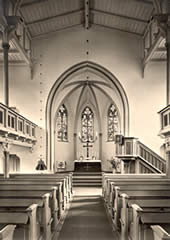
In 1869, when Louis Struckmeier was entering his teens, his father, Karl Struckmeier, and his grandfather, Georg Strukmeier, participated in the remodeling of the Hüllhorst Evangelical church over a three-year period, extending it to its current shape. Later, the church interior would serve as a model for the Evangelical church in Hoyleton, Illinois.
1872 – Struckmeier family emigration
When Louis was nineteen, the family left Hüllhorst and sailed for America.
Why they left is unclear. When Louis turned eighteen in 1871, he was of military age. He had two younger brothers who were 16 and 13 years old. Prussian wars of expansion in 1862, 1864, 1866, and 1870 seemed to set a continuing pattern of militarism in the future. In addition, the opportunities in America for business and farming were great.
Karl Struckmeier and his family left Prussia on August 30, 1872 and arrived in New York on September 21st. Joining Karl and Anna and their eight surviving children on the voyage was Anna’s father, Christian Kottmeier Greimann who was 79 years old. His wife Anna Greimann had died eighteen years earlier in 1854 at age 51.
Hoyleton, Washington, Illinois
Karl and Anna Struckmeier and their family settled in the small farming town of Hoyleton, in southern Illinois. In the late 1800s the population was about 300.
Two Congregational ministers and ten families from New York State had settled Hoyleton 14 years earlier in 1858. It was originally called Yankee Town, but the influx of German settlers soon changed the character of the settlement. One of the leading citizens of the surrounding township was Frederick E. W. Brink who had arrived in the area from Westfalen, Prussia in 1844. Letters back home soon persuaded other immigrants to follow.
For more information on Hoyleton, see Karl Struckmeyer and Anna Greimann.
1873 – Henriette Detering’s emigration
Henriette’s son, Charles Struckmeyer, recounted the circumstances of Henriette’s emigration to the United States in September 1873. She was persuaded to leave Germany by her older brother Casper Heinrich Detering, who was twelve years her senior.
In 1872, Uncle Casper Detering, who was living in the United States, was advised by his doctor to take a sea voyage for his health. He followed the advice and according to the story told about his voyage, it took six weeks for the sailboat to cross the Atlantic. While in Germany, Uncle Casper persuaded Mama to come back with him. And she did on September 15, 1873.
She came to St. Louis where Uncle Casper had been living, and stayed with Aunt Mary [Catharina Maria Detering] Ahlers for a time.
Eventually she went to Hoyleton, Illinois, to visit another sister, Aunt Clara [Maria Clara Elisabeth Detering] Rixman. Here she met our father, Louis Struckmeyer and was married on April 26, l877.”
1873 – 1879
When Karl and Anna Struckmeier arrived in Hoyleton in 1872, they bought land north of the village, built a home, began to farm. Karl and his sons raised wheat, potatoes and tobacco on a quarter section (160 acres) of Illinois prairie.
Their daughter Anne Marie Louise Struckmeier died two years later, on October 10, 1874 at the age of eleven. Anna’s father, Christian Ludwig Greimann, died on August 29, 1875 at the age of 76. His headstone is one of the oldest in the Zion Evangelical Church Cemetery in Hoyleton.
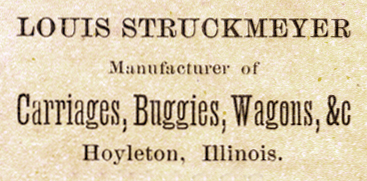
As a skilled carpenter, Louis Struckmeier saw an opportunity in the building of carriages, buggies and wagons and so in 1876 at the age of 23, four years after arriving in Hoyleton, he opened a wagon shop. He also did general carpentry work. His father, Karl, and his grandfather, Georg, had both been skilled cabinetmakers as well as farmers, and Louis followed in the tradition. He remained a wagon maker for the next 22 years.
The letterhead for his company shown above indicates that sometime between 1876 and 1898, Louis began spelling his name “Struckmeyer.”
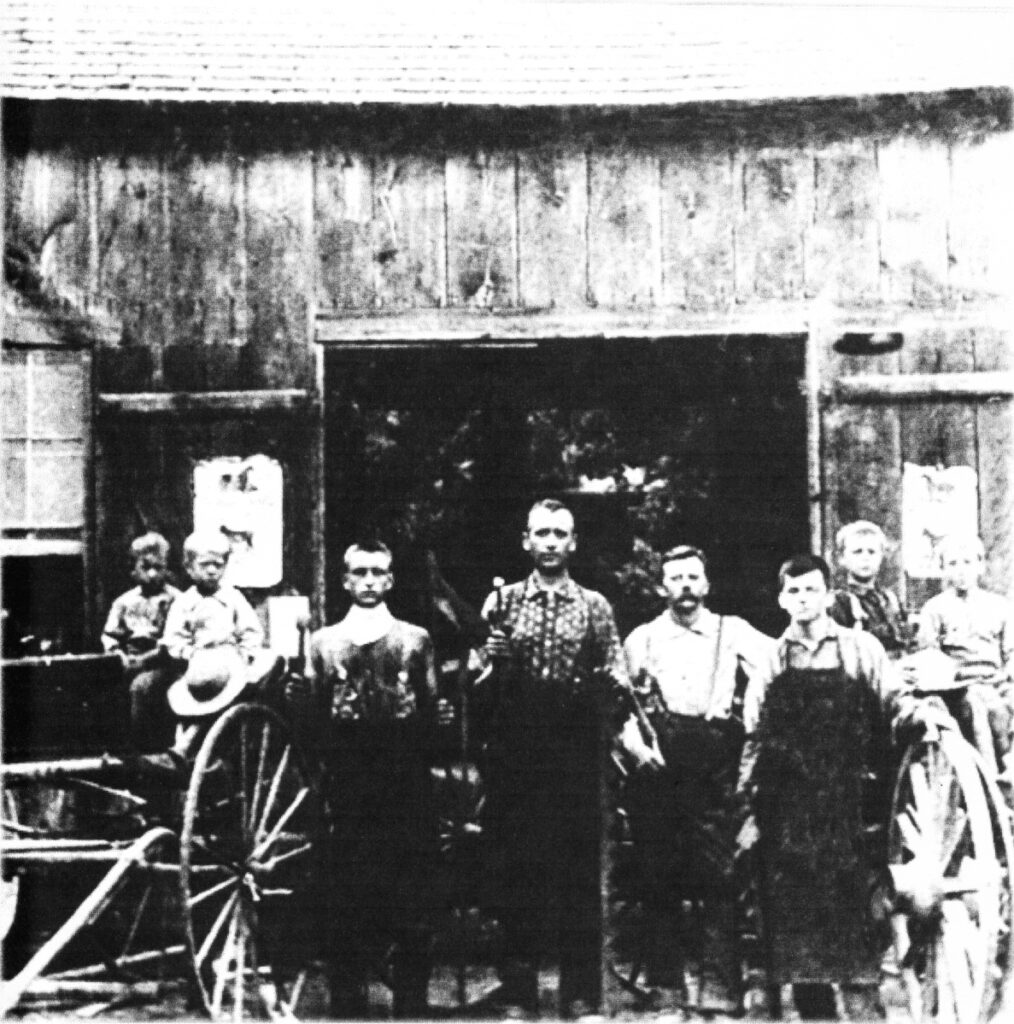
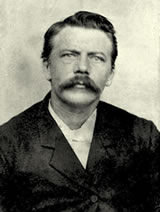
Louis Struckmeyer married Henriette Detering in Hoyleton on April 26, 1877 at Evangelische Zions Gemeinde (Evangelical Zion Congregation). Henriette had been born on April 26th and confirmed on April 26th, so the wedding date followed appropriately. The pastor was Rev. Louis von Rague.
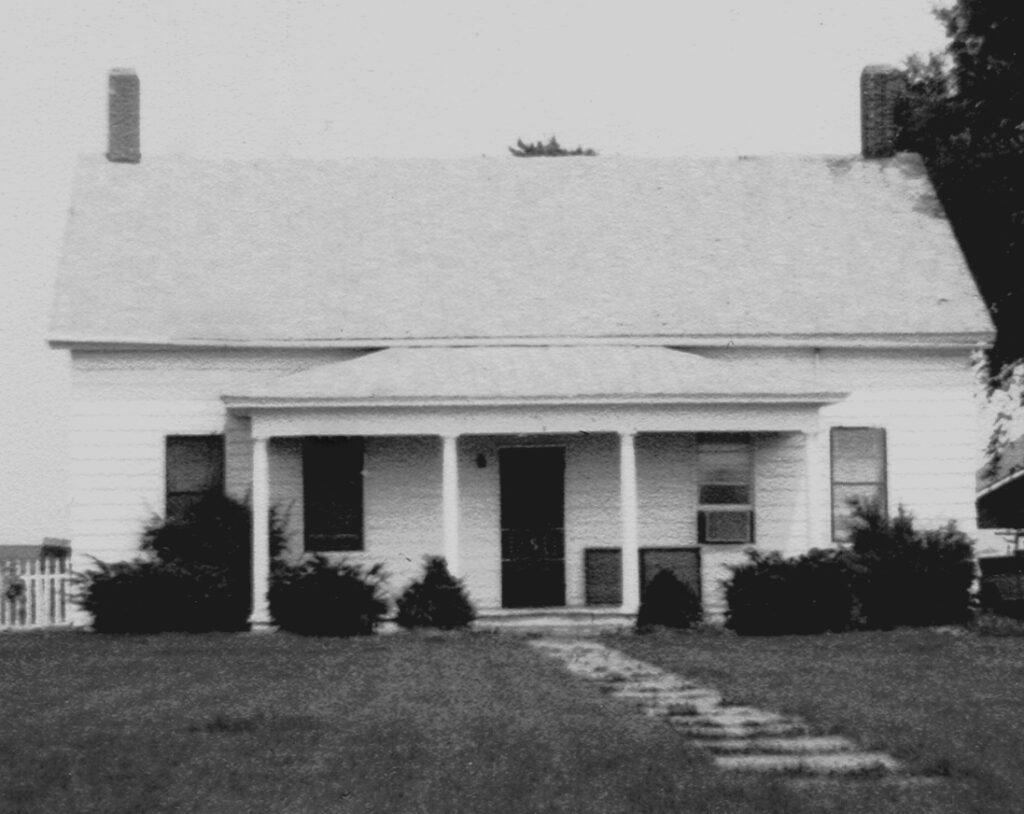
Louis moved from his father’s farm and built a home in the village of Hoyleton. His son, Carl (Charles), later wrote that his father owned two acres in town with a garden, fruit trees, a cow and hogs. Two hogs were fattened each year for slaughter. They also raised nearly a hundred bushels of potatoes a year on his grandfather’s (Karl Struckmeier’s) 160 acre farm.
It was a hard life according to Charles and income from the wagon shop was uncertain. But Charles said, “Though we couldn’t have been much poorer at times, I never missed a meal.”
Louis and Henriette had nine children in Hoyleton. Their first child, a daughter, was born in 1878.
- Anna Catherine, born February 21, 1878
Louis Struckmeyer became a naturalized citizen of the United States on November 1, 1878. Henriette was naturalized in 1879.
In 1879, Louis and his father Karl participated in the construction a church for the Evangelische Zions Gemeinde (Evangelical Zion Congregation). The brick-faced wood frame church was constructed at a cost of $8,000. It was modeled after the church in Hüllhorst which Karl Struckmeier had helped remodel a decade earlier. Karl also crafted a baptismal font which is still in use in the sanctuary today. In February 1880, the new church was dedicated.
1880 – 1889
The 1880 census spells Louis’ last name as “Struckmaear.” Louis (27) and Henrietta (26) are listed with their daughter “Annie” (2). Louis’s occupation was a wagon maker.
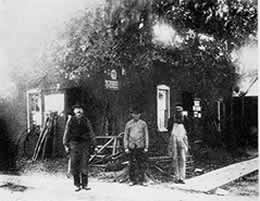
A cousin, Charles Struckmeier (also spelled Struckmaear) (17) who was a carpenter, lived in the same household, as did a boarder, Fredric Reis (22), a blacksmith.
Louis used the blacksmith services of Freidrich Pries in the manufacturing of his buggies and wagons, so perhaps this is another case of misspelling by the enumerator. (The photo at the right shows the Fred Pries blacksmith shop in 1910.)
The cousin, Charles Struckmeier, was Carl Heinrich Struckmeier (1863-1898), who was a second-cousin to Louis. Carl was the son of Heinrich Gottlieb Struckmeier and Anna Maria Luise Steinkamp. The common ancestor of these cousins was their great-grandfather Johann Jürgen Struckmeier (1754-1835) who lived in Holsen Nr. 16.
Carl Heinrich Struckmeier was born in Holsen in January 1863. He emigrated to the United States in 1880 and so would have arrived just before the census. He later moved to St. Louis and married Bertha Dorothea Koenig. He attended Eden Seminary in Marthasville, Missouri and was ordained in Iowa. He served parishes in St. Louis and San Angelo, Texas. He died in St. Louis from throat cancer at the age of 35 in 1898.
During the decade of the 1880s, Louis and Henriette had five more children.
- Frederick (Fred) Dietrich, born January 3, 1881
- Clara Anna, born May 4, 1882
- Marie Catherine, born March 31, 1884
- Carl (Charles) William, born April 16, 1886
- Martha Anna Marie, born May 9, 1889
Hoyleton was incorporated as a village in 1881. Louis was elected to serve as a village trustee in 1888 and 1889.
In October 1887, Zion Evangelical Congregation in Hoyleton celebrated their 25th anniversary. The church had 96 families and 90 children attended the parochial school.
1890 – 1899
No census record is available for 1890 because the Federal Census of 1890 was destroyed by a fire at the Commerce Department in Washington, D.C. on January 10, 1921. The surviving fragments of 1,233 pages list only 6,160 of the 62 million people counted.
Louis was elected to serve as a Hoyleton village trustee again in 1896 and 1897.
During the decade of the 1890s, three more daughters were born.
- Johannah (Hannah) Marie, born January 1, 1891
- Henrietta Caroline Elizabeth, born June 15, 1893
- Eleanora (Eleanor) Louise, born June 7, 1898
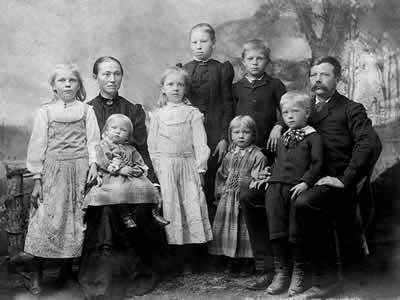
The photo above was taken sometime around 1892, most likely at a studio in Centralia, Illinois, which the closest major town to Hoyleton. Henriette and Louis are shown with the first seven of their nine children. From the left in the photo are Clara, Henriette (seated), Johannah (on lap), Marie, Anna, Frederick, Martha, Carl, and Louis Struckmeyer. Daughters Henrietta and Eleanora were still to come.
The photos below are hard to date. They were taken at Peter H. Beenck’s Double Light Gallery at 2405 Broadway in North St. Louis between North Market and Benton Streets. A listing of old St. Louis photographers shows that Beenck was at this address between 1876 and 1879, before moving on to a new location in 1880. But the images suggest that the photos were taken sometime in 1891.
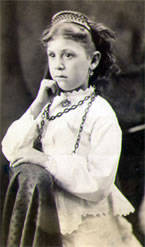
Anna 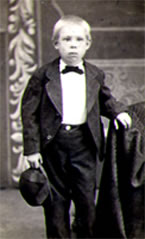
Frederick 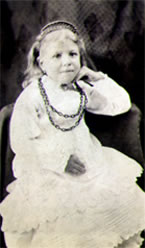
Clara 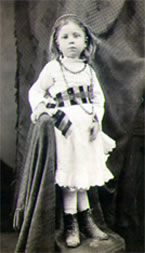
Marie 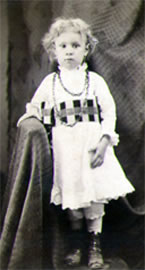
Martha 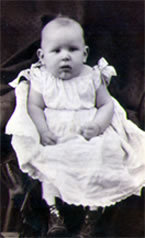
Johanna
As Frederick Struckmeyer grew, his father taught him woodworking skills and he assisted his father in the wagon shop.
Several years later, around 1894 or 1895, Louis Struckmeyer served on a Federal Grand Jury in Cairo, Illinois. As indicated on the detail of the group photo below, Louis was juror number 13.
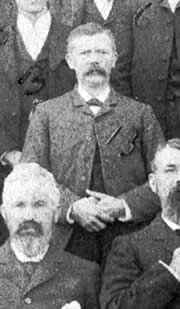
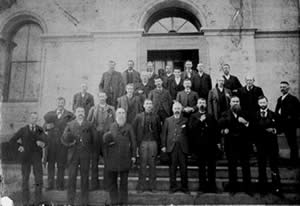
In 1898 the family moved from Hoyleton, Illinois to St. Louis, Missouri. The move was stimulated by an economic downturn. The U.S. economy had experienced a depression in 1893 and recovery was slow. Louis’ wagon shop was a victim. Several wagons had been built for purchasers who could no longer afford to pay for them.
The nearby city of St. Louis was growing and Louis decided to relocate there to improve his business prospects. He abandoned wagon making and became a general carpenter and later a contractor, building homes in anticipation of an expansion for the coming World’s Fair.
1900 – 1909
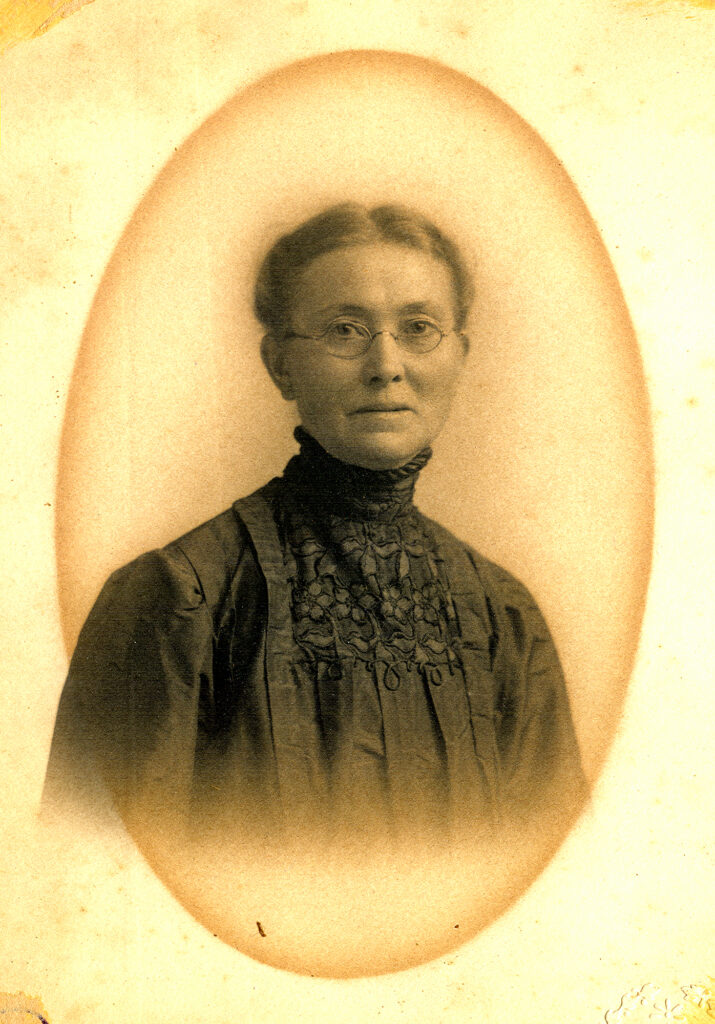
In 1900, Louis Struckmeyer and his family were living in a two-family flat at 1915 Hebert Street just north of downtown in an area known as Old North St. Louis near the intersection of North Florissant and Natural Bridge Avenues. The home, which has been torn down, was located between 19th and 20th Streets.
The June 1900 census lists Louis (46), Henrietta (47) and seven of their nine children: Frederick D. (19), Clara (18), Charles (14), Martha (11), Johannah (9), Henrietta (6), and Eleanore (1). Louis was listed as a “car hanger” (?) and Frederick as a wagon wood worker. I’m not sure if “car hanger” (whatever that is) was his actual occupation or if the enumerator misunderstood the word “carpenter.”
Missing from the household were the two of the oldest daughters, Anna Catherine (22) and Marie Catherine (16). Anna may have been away from home studying to be nurse, but her name does not show up in the census. Marie may have been an oversight.
On October 27, 1901, Louis’ father, Karl Struckmeyer died in Hoyleton at age 78. Karl, who suffered from asthma, fell asleep in his rocking chair and never awoke.
City directories for 1903 and 1904 show the family living at 2611 Natural Bridge Road in North St. Louis, which has since been torn down.

From April 30, 1904 to December 1, 1904. the Louisiana Purchase Exposition was held in St. Louis, celebrating the centennial of Thomas Jefferson’s major addition to the territory of the United States. The World’s Fair was located on the present-day grounds of Forest Park and Washington University, and was the largest fair to date with over 1,500 buildings. Exhibits were staged by 62 foreign nations, the United States government, and 43 of the 45 U.S. states. The Fair also hosted the 1904 Summer Olympic Games, the first Olympics held in the United States. These games had originally been awarded to Chicago, but when St. Louis threatened to hold a rival international competition, the games were relocated.
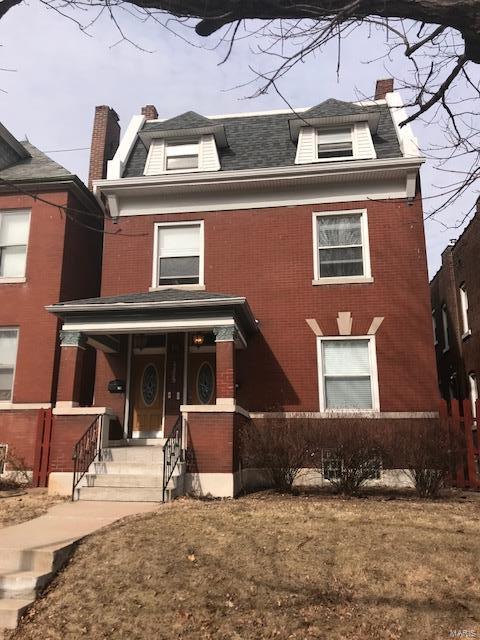
Around 1905, Louis Struckmeyer built a home for his family at 4229 Hartford Street just south of Tower Grove Park in South St. Louis, near the intersection of Arsenal Street and Morganford Road.
On December 14, 1905, Louis Struckmeyer died in St. Louis. He was 53 years old and he left behind nine children, four under the age of 18: Martha (16), Johannah (14), Henrietta (11) and Eleanore (6). He did not live to see any of his children marry. It was left to his widow, Henriette, to care for the future of the family.
On October 25, 1906, Anna Catherine Struckmeyer graduated from the Lutheran Hospital School of Nurse Training in St. Louis. The commencement, held at Concordia Seminary, was reported in The Trained Nurse and Hospital Review of December, 1906.
A good program was rendered of both vocal and instrumental music and two addresses, one in English and one in German.
The General Evangelical Lutheran Hospital and Asylum (later simply known as the Lutheran Hospital), founded in 1858 at the corner of Seventh and Sidney Streets, had established a training school for nurses in 1898.
On June 23, 1909, Clara Anna Struckmeyer married Gerhard Wilcke Kelsch in St. Louis. Gerhard was the son of Oscar Kelsch and Anna Wilcke. His sister Sophia Kelsch would marry Charles Struckmeyer three years later.
1910 – 1919
On February 8, 1910, Frederick Dietrich Struckmeyer married Ida Martha Fahrni in St. Louis.
The 1910 Federal Census gives us an updated picture of the family after the death of Louis. Henrietta Struckmeyer (56) was still living at 4229 Hartford Street in St. Louis where she was now listed as the head of the household. Clara and Fred were married, but seven of her nine children still lived at home with her.
Anna (32) was a trained nurse in general practice. Mary [Marie], (26) was a dressmaker at a department store. Charles (23) was a clerk at the Post Office. Martha (20) was a stenographer for a drug (pharmaceutical) house. Hannah (19) was a bookkeeper for a coffin company. Henrietta (16) and Eleanor (11) were still in school and had no occupations.
Sometime between 1910 and 1920, Marie Catherine Struckmeyer attended nursing school most likely also at Lutheran Hospital), following in the steps of her elder sister Anna Catherine.
In May 1911, Anna Catherine Struckmeyer, now a nurse with the American Red Cross, was one of six Red Cross nurses sent to the base hospital at Fort Sam Houston in San Antonio, Texas. This was during the time of the Mexican Revolution. From 1910 until World War II, Fort Sam Houston was the largest Army post in the continental United States. Anna’s assignment was reported in The American Journal of Nursing in July 1911.
On April 16, 1912, Charles Struckmeyer married Sophia Louisa Wanda Kelsch in St. Louis. (See Charles Struckmeyer and Sophia Kelsch). Sophia was the sister of Gerhard Wilcke Kelsch whom Clara Struckmeyer had married three years earlier.
In January 1913, The Trained Nurse and Hospital Review reported that Anna Catherine Struckmeyer had “taken charge of the hospital at Carbondale, Illinois.” I have no information about the exact name or location of the hospital.
Gould’s St. Louis Red Book for 1914 listed Anna Struckmeyer, a nurse, living at 4229A Hartford Street. This must have been an upper flat of 4229 Hartford.
In the February 1917 issue of The American Journal of Nursing, Anna Struckmeyer published an article titled “The Duties of a Superintendent as Regards State Registration.” It concerned her duties as a superintendent at a school of nursing in Greenville, Mississippi. So far I have only seen a copy of the first page of the article and I have no information about the name of the hospital.
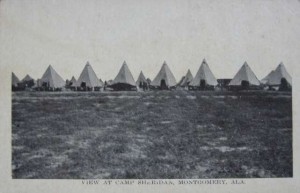
On December 18, 1917, Anna Struckmeyer joined the Army Nurse Corps and was assigned to the U.S. Army Base Hospital at Camp Sheridan, north of Montgomery, Alabama. Her assignment was reported in The Trained Nurse and Hospital Review of January 1918. The United States had entered World War I with a declaration of war on April 6, 1917.
On October 2, 1919, Henrietta Caroline Elizabeth Struckmeyer married Henry Harrison Seibert in St. Louis. Known as Harry, we worked as a pharmacist in Carbondale, Illinois.
On November 19, 1919, Johannah (Hannah) Struckmeyer married Arthur William Reiter in St. Louis. Arthur worked as an accountant at a bank.
1920 – 1929
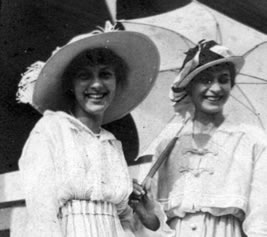
The 1920 census shows Henrietta Struckmeyer (age 67) still living at 4229 Hartford Street with her daughters Martha (30), Eleanor (21), Hannah (28), and Hannah’s husband, Arthur Reiter (28).
The census states incorrectly that Henrietta emigrated from Hanover, Germany in 1892 (it was 1873) and became a naturalized citizen in 1899 (it was 1879).
Eleanor and Martha Struckmeyer (shown above) were both stenographers. Martha worked for a paint and roofing company, and Eleanor for a typewriter office. Hannah was not employed. Her husband, Arthur, was an accountant at a bank.
In 1920, Anna Catherine (42) and Marie Catherine Struckmeyer (36) were living in a rooming house in Greenville, Mississippi. Anna (listed as Annie) was a superintendent at a Greenville hospital. Marie was a nurse there.
On June 4, 1923, Anna Catherine Struckmeyer married Conrad Ludwig Schmidt in St. Louis. Anna, who had a career as a Red Cross and Army nurse and as a nursing supervisor in Greenvile, was 45 when she married. Conrad was a widower with two young son, ages 5 and 3.
- Reed Alfred Schmidt, born March 11, 1917 in Missouri
- Conrad Vernon Schmidt, born October 6, 1918 in Missouri
Their mother was Ada Pearl (maiden name unknown), who was born in Missouri in 1893. Ada and Conrad married sometime around 1915. By 1923, she had died before the age of 30.
On June 21, 1923, just over two weeks after Anna and Conrad married, Eleanore Louise Struckmeyer, the youngest child of Louis and Henrietta, married Clarence William J. Koch in St. Louis.
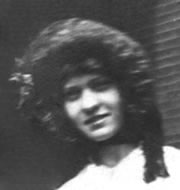
On September 30, 1927, Marie Catherine Struckmeyer died at her home at 6607 Hoffman Avenue at age 43.
On the day before her death, St. Louis was hit by a tornado that killed 79 people and injured 550. At one o’clock in the afternoon of September 29th, a powerful tornado (F3-scale) struck the central parts of the city. A large number of people were trapped in buildings, including Central High School where 1,500 students were attending classes. The tornado cut a 600-yard by 12-mile long swath through the city, costing between 22-53 million dollars of damage.
Marie’s death certificate lists the cause of death as pneumonia, but her physician noted that he had treated her for over two years for chronic lethargic encephalitis. This is an inflammation of the brain caused by viruses, bacteria, or the bite of an infected insect. Between 1915 and 1926, this form of encephalitis, also called “sleeping sickness,” was epidemic in the United States. Marie apparently contracted the disease in 1925. We don’t know if that happened in St. Louis or in Greenville, Mississippi where she had worked as a nurse. Pneumonia is a leading cause of death of people who are chronically ill as Marie apparently was.
An article on the sleeping sickness epidemic reports:
Beginning as early as 1916, and continuing well into the 1920s, an unusual and disturbing illness devastated millions of people throughout the world. It arrived in the shadow of the 1918 Spanish Flu epidemic—which killed an estimated fifty million people worldwide—so it has been largely overlooked by history despite the fact that it took the lives of over a million people, and left countless others frozen inside unresponsive bodies.
Young people, particularly women, were the most vulnerable to the disease, though it affected people of all ages. When an individual was stricken, the first signs were typically a sore throat and fever accompanied by a headache; but these discomforts soon developed into more alarming problems such as double-vision and severe weakness. Within hours, most of the victims were gripped by episodes of tremors, strange bodily movements, intense muscle pains, and delayed mental response. Symptoms rapidly increased in severity, and in spite of medical attention, most patients worsened dramatically. Behavioral changes often appeared– including psychosis and hallucinations– followed by steadily increasing drowsiness and lethargy. Many became comatose and completely unresponsive.
Medical science was baffled by the bizarre epidemic, which affected millions of people across the globe. The mysterious disease was given the name Encephalitis lethargica, which literally means “inflammation of the brain that makes you tired,” but it was more commonly known as “sleeping sickness.” Such a melancholy designation was appropriate, considering that hundreds of thousands of people died from the inexplicable ailment without ever regaining consciousness.Among the survivors, victims tended to remain in a coma indefinitely, sometimes for months or years. Although full recoveries were not unheard of, they were a rarity. Many of those stricken with the disease experienced ill effects which lingered throughout the rest of their lives, including vision problems, difficulty swallowing, personality changes, and sometimes permanent psychosis.
In 1928, as suddenly as it had appeared, the encephalitis lethargica epidemic was gone.
1930 – 1937
The 1930 Census shows Martha Struckmeyer employed as a bookkeeper for a construction company, which was most likely that of the McCarthy brothers, as indicated below. In 1930, Martha (listed as 38, but actually 40) and her mother Henrietta (76) were living at 6607 Hoffman Avenue, and no longer at 4227 Hartford, the house that Louis had built. Just two doors away, at 6623 Hoffman, lived Arthur (38) and Hannah (38) Reiter and their son Arthur, Junior (6). Arthur was a department manager at a bank. Next door to them, at 6627 Hoffman, lived Clarence (32) and Eleanore (31) Koch and their son Donald (4). Clarence was a secretary at a hardware store.
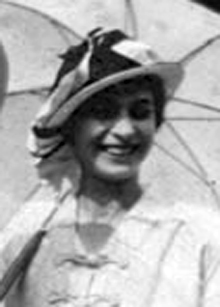
Martha Struckmeyer, who never married, may have saved her employers during the Great Deprssion. A letter from the president of the McCarthy Brothers Construction Company to the Mississippi Valley Trust Company dated October 1936, and recently found by Barry Heuer, introduced Martha A. Struckmeyer (who was then 47 years old) as the company’s acting secretary. She made a deposit of $47,174.40 on behalf of the company. A note on the envelope in which the letter was found indicated that this amount was a loan by Martha to her employers at the construction company.
McCarthy Brothers was founded in Farmington, Missouri in 1907 as the McCarthy Lumber and Construction Company. The business relocated to St. Louis in 1917 and was renamed McCarthy Brothers Construction Company. Today, it is a nation-wide construction firm known as the McCarthy Building Companies. It may be that the loan made by Martha Struckmeyer to them in 1936 during the economic hardships of the Great Depression saved the business which thrives today.
Henriette Struckmeyer died on January 5, 1937. She was 83. Her only unmarried daughter Martha remained with her at her death.
[Settlement of the estate]
- Frederick (Fred) Dietrich Struckmeyer died on November 15, 1951
- Clara Anna (nee Struckmeyer) Kelsch died on March 15, 1968
- Anna Catherine (nee Struckmeyer) Schmidt died on November 13, 1975
- Carl (Charles) William Struckmeyer died on May 8, 1979
- Henrietta Caroline Elizabeth (nee Struckmeyer) Seibert died on November 3, 1980
- Martha Anna Marie Struckmeyer died in May 1981
- Johannah (Hannah) Marie (nee Struckmeyer) Reiter died in June 1981
- Eleanora (Eleanor) Louise (nee Struckmeyer) Koch died in April 1993
(History to be continued…)